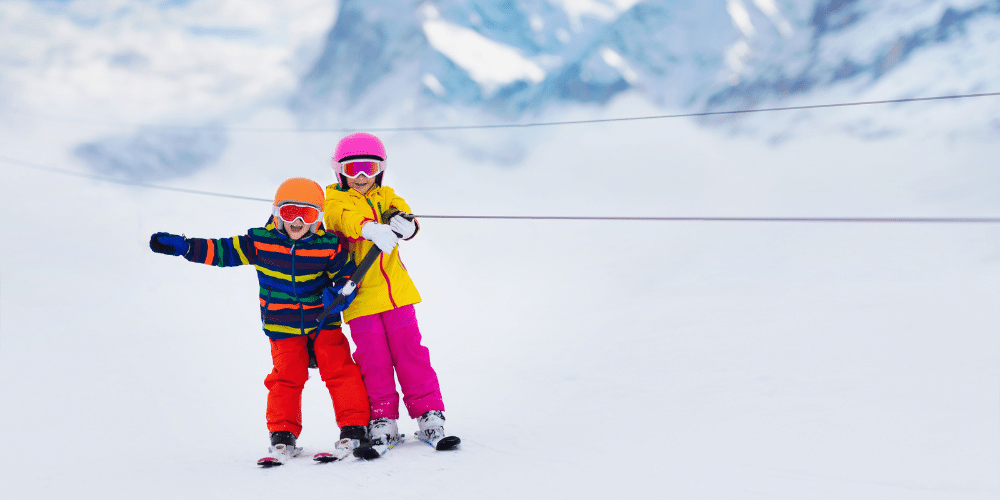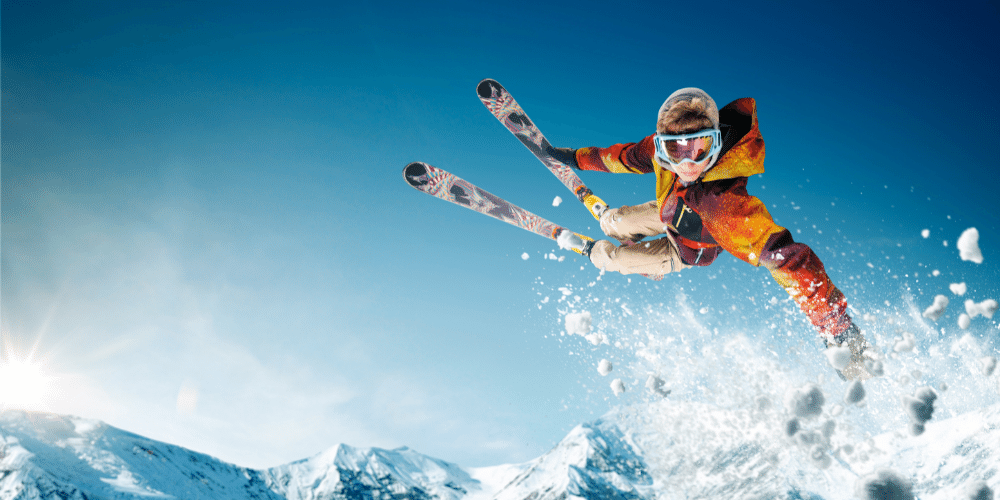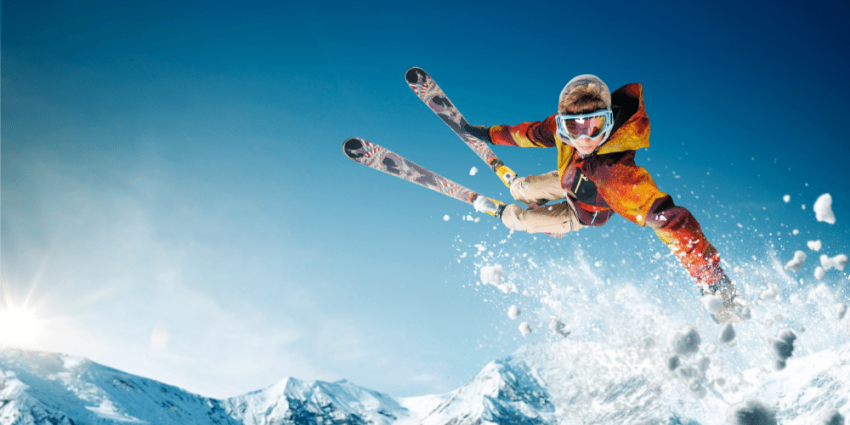Skiing is a popular winter sport that people of all ages can enjoy. If you’re new to skiing, you may be wondering what kind of clothing you need to wear in order to stay comfortable and safe on the slopes. In this blog post, we will go over what to wear skiing, from head to toe. We will also give you some tips on how to choose the right clothing for your body type and level of experience. So if you’re ready to hit the slopes, read on for everything you need to know about what to wear skiing.
What to wear skiing
Assuming you have all the necessary gear for skiing, you need to consider what you will wear while skiing. The most important factor in deciding what to wear skiing is staying warm. Depending on the weather and your own personal preferences, you can layer up or dress more heavily.
Some people prefer to wear ski pants and a ski jacket, while others just wear a heavy coat. If it is extremely cold outside, you might want to consider wearing thermals under your clothes. It is also important towear a hat or headband to keep your ears warm.
Sunglasses are also crucial for sunny days spent on the slopes. Not only do they protect your eyes from the bright sun, but they also help prevent snow blindness. Ski goggles are another option for eye protection and can be worn in place of sunglasses.
Finally, don’t forget about your hands! Hand Warmers are great for keeping your fingers toasty, especially if you don’t have gloves that fit well.

How to stay warm while skiing
One of the most important things to consider when hitting the slopes is how you can stay warm throughout the day. After all, if you’re not comfortable, you’re not going to have a good time. Here are a few tips on how to stay warm while skiing:
Layering is key – make sure to wear multiple layers of clothing that you can peel off as needed.
Warm socks are a must – your feet will thank you for it!
Invest in a good ski jacket – one that’s waterproof and windproof.
A scarf or neck warmer can also help keep the chill at bay.
Don’t forget your gloves or mittens!
Last but not least, make sure to drink plenty of fluids and take breaks often to avoid getting too cold.
How to layer your clothing for skiing
Assuming you have all the necessary gear for skiing, layering your clothing correctly is key to staying comfortable on the slopes. Here’s how to do it:
1. Start with a base layer of thermal underwear. This will help wick away sweat and keep you warm.
2. Add a mid-layer of fleece or wool. This will provide additional warmth and insulation.
3. Top it off with a waterproof and windproof outer layer. This will protect you from the elements and keep you dry.
4. Finally, add accessories like gloves, a scarf, and a hat to keep your extremities warm.
What kind of boots to wear for skiing
When it comes to boots, there are two main types of boots that are suitable for skiing – alpine ski boots and cross-country ski boots.
Alpine ski boots are designed for downhill skiing and are typically much stiffer than cross-country ski boots. They usually have a plastic or composite shell and feature an integrated binding system that attaches the boot to the ski.
Cross-country ski boots, on the other hand, are designed for Nordic skiing and are generally much lighter and more flexible than alpine ski boots. They usually have a leather or fabric upper and a separate binding system that attaches the boot to the ski.
So, which type of boot should you wear for skiing? It really depends on what type of skiing you plan on doing. If you’re mostly going to be downhill skiing, then alpine ski boots are likely your best option. However, if you’re planning on doing a mix of downhill and cross-country skiing, or if you’re mostly going to be cross-country skiing, then cross-country ski boots might be a better choice.
What kind of gloves to wear for skiing
When it comes to gloves, there are a few things to consider. First, you need to decide what kind of material you want your gloves to be made out of. There are a variety of materials to choose from, including leather, synthetic, and wool. Each material has its own advantages and disadvantages, so it’s important to choose the one that’s right for you.
Next, you need to consider the fit of the gloves. They should be snug but not too tight. You also want them to be comfortable so that you can wear them all day without having any issues.
Finally, you need to think about the features that you want your gloves to have. For example, some gloves come with built-in hand warmers, which can be very helpful on cold days. Others have extra padding in the palms for added comfort and protection. Choose the features that are most important to you and then find a pair of gloves that has them.
How to stay dry while skiing
When you’re skiing, you need to be prepared for all kinds of weather. If it’s raining or snowing, you’ll want to make sure you have the right gear to stay dry. Here are some tips for staying dry while skiing:
1. Wear waterproof and windproof clothing. This will help you stay dry and comfortable while you’re skiing.
2. Layer your clothing. Wearing multiple layers will trap heat and help keep you warm. It will also give you extra protection from the elements.
3. Use ski wax. Ski wax helps repel water and keeps your skis from getting wet. It also makes it easier to glide on the snow.
4. Bring a towel. A towel can come in handy if you get wet while skiing. You can use it to dry off your skis or yourself, depending on what’s wetter.
5. Change into dry clothes when you’re done skiing. This will help you avoid getting cold or sick after a day on the slopes

What to wear under your ski clothes
When hitting the slopes, you want to make sure you have the proper undergarments to keep you warm and dry. Depending on the kind of ski clothes you’re wearing, you may need to layer up or down to stay comfortable.
First, start with a base layer made of synthetic material or wool. This will help wick away sweat and keep you warm even when wet. Next, add an insulating layer like fleece or down. Finally, top it off with a waterproof and windproof outer layer.
As for what to wear on your feet, make sure you have socks that will fit well inside your boots and provide extra insulation. Your boots should be snug but not too tight, and they should be lined with a moisture-wicking material to keep your feet dry.
Layering for skiing
One of the most important things to remember when dressing for a day of skiing is to layer your clothing. This will allow you to stay warm and dry while out on the slopes.
The first layer should be a base layer made of wool or synthetic material. This will help to wick away sweat and keep your body temperature regulated. The second layer should be an insulating layer such as down or synthetic fleece. This will help to trap in heat and keep you warm. The third and final layer is the shell layer which is typically a waterproof and breathable jacket and pants. This will protect you from the elements and allow you to move freely.
Conclusion
There is no one-size-fits-all answer to what to wear skiing, as the best apparel depends on both the conditions and your personal preferences. However, there are a few key items that every skier should have in their wardrobe, including a good pair of ski pants, a warm jacket, and goggles or sunglasses. With the right clothing, you’ll be able to enjoy your time on the slopes while staying comfortable and protected from the elements.










Leave a Reply